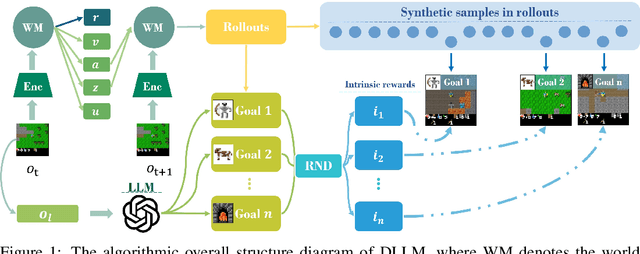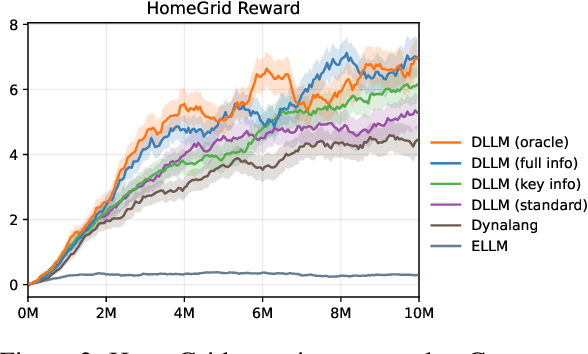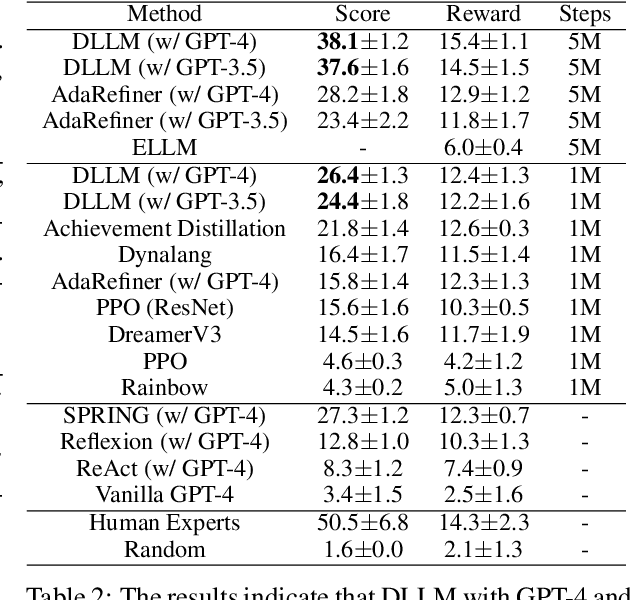Zeyuan Liu
ADG: Ambient Diffusion-Guided Dataset Recovery for Corruption-Robust Offline Reinforcement Learning
May 29, 2025Abstract:Real-world datasets collected from sensors or human inputs are prone to noise and errors, posing significant challenges for applying offline reinforcement learning (RL). While existing methods have made progress in addressing corrupted actions and rewards, they remain insufficient for handling corruption in high-dimensional state spaces and for cases where multiple elements in the dataset are corrupted simultaneously. Diffusion models, known for their strong denoising capabilities, offer a promising direction for this problem-but their tendency to overfit noisy samples limits their direct applicability. To overcome this, we propose Ambient Diffusion-Guided Dataset Recovery (ADG), a novel approach that pioneers the use of diffusion models to tackle data corruption in offline RL. First, we introduce Ambient Denoising Diffusion Probabilistic Models (DDPM) from approximated distributions, which enable learning on partially corrupted datasets with theoretical guarantees. Second, we use the noise-prediction property of Ambient DDPM to distinguish between clean and corrupted data, and then use the clean subset to train a standard DDPM. Third, we employ the trained standard DDPM to refine the previously identified corrupted data, enhancing data quality for subsequent offline RL training. A notable strength of ADG is its versatility-it can be seamlessly integrated with any offline RL algorithm. Experiments on a range of benchmarks, including MuJoCo, Kitchen, and Adroit, demonstrate that ADG effectively mitigates the impact of corrupted data and improves the robustness of offline RL under various noise settings, achieving state-of-the-art results.
World Models with Hints of Large Language Models for Goal Achieving
Jun 11, 2024



Abstract:Reinforcement learning struggles in the face of long-horizon tasks and sparse goals due to the difficulty in manual reward specification. While existing methods address this by adding intrinsic rewards, they may fail to provide meaningful guidance in long-horizon decision-making tasks with large state and action spaces, lacking purposeful exploration. Inspired by human cognition, we propose a new multi-modal model-based RL approach named Dreaming with Large Language Models (DLLM). DLLM integrates the proposed hinting subgoals from the LLMs into the model rollouts to encourage goal discovery and reaching in challenging tasks. By assigning higher intrinsic rewards to samples that align with the hints outlined by the language model during model rollouts, DLLM guides the agent toward meaningful and efficient exploration. Extensive experiments demonstrate that the DLLM outperforms recent methods in various challenging, sparse-reward environments such as HomeGrid, Crafter, and Minecraft by 27.7\%, 21.1\%, and 9.9\%, respectively.
CDSA: Conservative Denoising Score-based Algorithm for Offline Reinforcement Learning
Jun 11, 2024Abstract:Distribution shift is a major obstacle in offline reinforcement learning, which necessitates minimizing the discrepancy between the learned policy and the behavior policy to avoid overestimating rare or unseen actions. Previous conservative offline RL algorithms struggle to generalize to unseen actions, despite their success in learning good in-distribution policy. In contrast, we propose to use the gradient fields of the dataset density generated from a pre-trained offline RL algorithm to adjust the original actions. We decouple the conservatism constraints from the policy, thus can benefit wide offline RL algorithms. As a consequence, we propose the Conservative Denoising Score-based Algorithm (CDSA) which utilizes the denoising score-based model to model the gradient of the dataset density, rather than the dataset density itself, and facilitates a more accurate and efficient method to adjust the action generated by the pre-trained policy in a deterministic and continuous MDP environment. In experiments, we show that our approach significantly improves the performance of baseline algorithms in D4RL datasets, and demonstrate the generalizability and plug-and-play capability of our model across different pre-trained offline RL policy in different tasks. We also validate that the agent exhibits greater risk aversion after employing our method while showcasing its ability to generalize effectively across diverse tasks.
Adaptive Boosting with Fairness-aware Reweighting Technique for Fair Classification
Jan 06, 2024Abstract:Machine learning methods based on AdaBoost have been widely applied to various classification problems across many mission-critical applications including healthcare, law and finance. However, there is a growing concern about the unfairness and discrimination of data-driven classification models, which is inevitable for classical algorithms including AdaBoost. In order to achieve fair classification, a novel fair AdaBoost (FAB) approach is proposed that is an interpretable fairness-improving variant of AdaBoost. We mainly investigate binary classification problems and focus on the fairness of three different indicators (i.e., accuracy, false positive rate and false negative rate). By utilizing a fairness-aware reweighting technique for base classifiers, the proposed FAB approach can achieve fair classification while maintaining the advantage of AdaBoost with negligible sacrifice of predictive performance. In addition, a hyperparameter is introduced in FAB to show preferences for the fairness-accuracy trade-off. An upper bound for the target loss function that quantifies error rate and unfairness is theoretically derived for FAB, which provides a strict theoretical support for the fairness-improving methods designed for AdaBoost. The effectiveness of the proposed method is demonstrated on three real-world datasets (i.e., Adult, COMPAS and HSLS) with respect to the three fairness indicators. The results are accordant with theoretic analyses, and show that (i) FAB significantly improves classification fairness at a small cost of accuracy compared with AdaBoost; and (ii) FAB outperforms state-of-the-art fair classification methods including equalized odds method, exponentiated gradient method, and disparate mistreatment method in terms of the fairness-accuracy trade-off.
 Add to Chrome
Add to Chrome Add to Firefox
Add to Firefox Add to Edge
Add to Edge